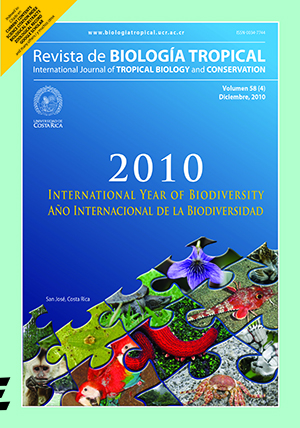Abstract
Tadpoles inhabit generally well oxygenated rivers and streams, nevertheless they were found in areas with limited oxygen availability inside the rivers. To assess this feature, I examined factors that influence centrolenid tadpole behaviour using Cochranella granulosa. The tadpoles were reared in well-oxygenated and hypoxic environments and their development, survivorship and growth were compared. The tadpoles in oxygenated water acquired a pale color, while tadpoles in hypoxic water grew faster and were bright red and more active. In the oxygenated water, the ammonium, which had its origin in the tadpoles urine and feces, was oxidized to nitrate. In contrast, in the hypoxic treatment, the nitrogen compounds remained mainly as ammonium. Presumably, the nitrate in oxygenated water was secondarily reduced to nitrite inside the long intestine coils, because all symptoms in the tadpoles point to methemoglobinemia, which can occur when the nitrite passes through the intestine wall into the bloodstream, transforming the hemoglobin into methemoglobin. This could be checked by a blood test where the percentage of methemoglobin was 2.3% in the blood of tadpoles reared in hypoxic condition, while there was a 19.3% level of methemoglobin in the blood of tadpoles reared in oxygenated water. Together with the elevated content of methemoglobin, the growth of the tadpoles was delayed in oxygenated water, which had high nitrate content. The study about quantitative food-uptake showed that the tadpoles benefit more from the food in hypoxic water, although they spent there more energy moving around than the tadpoles living in oxygenated but nitrate-charged water.
This work is licensed under a Creative Commons Attribution 4.0 International License.
Copyright (c) 2010 Revista de Biología Tropical
Downloads
Download data is not yet available.

